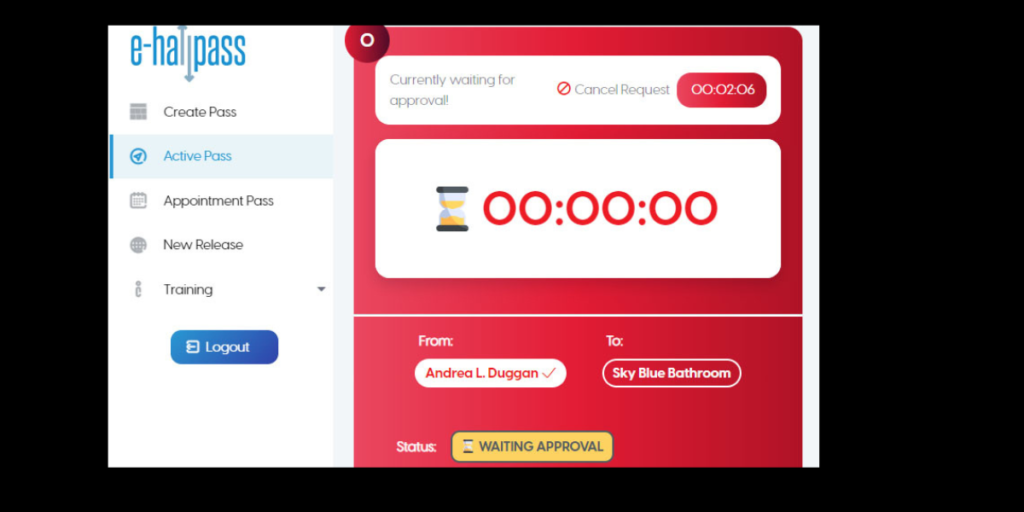In educational institutions, managing student movement within school hallways is a critical aspect of maintaining order, safety, and efficiency. Traditionally, schools have relied on paper-based systems or rudimentary methods for tracking student movement, which can be cumbersome and prone to errors. Enter eHallPass, a modern solution designed to streamline this process using technology. This article explores the eHallPass system, its features, benefits, and impact on the educational environment.
Overview of eHallPass
eHallPass is a digital system designed to manage and track student movement within schools. By replacing traditional paper hall passes with a digital solution, eHallPass aims to enhance the efficiency of school operations, improve safety, and provide valuable data insights. The platform is used by educational institutions to manage student transitions between classes, monitor hallways, and ensure that students are where they are supposed to be.
Features of eHallPass
1. Digital Pass Creation
One of the core features of eHallPass is its ability to create digital hall passes. Students can request passes through a web or mobile app, which are then reviewed and approved by teachers or school staff. This eliminates the need for physical passes and reduces the risk of misuse or loss.
2. Real-Time Tracking
eHallPass provides real-time tracking of student movements. As students use their digital passes, their locations are updated in real time, allowing school administrators and staff to monitor hallway activity and ensure that students are in authorized areas.
3. Automatic Notifications
The system can send automatic notifications to teachers and staff when students leave or enter certain areas. This feature enhances communication between teachers and administration and helps maintain a secure environment.
4. Data Analytics and Reporting
eHallPass offers data analytics and reporting capabilities. Schools can generate reports on student movement patterns, pass usage, and other metrics. This data can be used to identify trends, address potential issues, and improve overall hallway management.
5. Integration with School Systems
eHallPass can be integrated with existing school management systems, such as student information systems (SIS) and learning management systems (LMS). This integration allows for seamless data exchange and enhances the system’s effectiveness.
6. Customizable Permissions and Rules
The platform allows schools to set customizable permissions and rules for pass usage. For example, certain passes may be restricted to specific times or locations, and different types of passes can be assigned to different purposes, such as medical visits or administrative errands.
How eHallPass Works
1. Student Request
When a student needs to leave the classroom or move to another part of the school, they submit a request for a digital pass through the eHallPass app or web portal. The request includes information such as the reason for leaving and the intended destination.
2. Teacher Approval
The student’s request is reviewed by the teacher or school staff. If approved, the digital pass is issued and sent to the student’s device. If denied, the student is notified with the reason for the denial.
3. Pass Usage
Once the digital pass is issued, the student can use it to move through the school. The system tracks the student’s location and updates their status in real time.
4. Monitoring and Notifications
School staff and administrators can monitor student movement through the eHallPass dashboard. Notifications are sent to relevant personnel if there are any issues or if a student enters an unauthorized area.
5. Data Collection and Reporting
The system collects data on pass usage, student movement, and other relevant metrics. Schools can generate reports and analyze this data to improve hallway management and address any issues.
Benefits of eHallPass
1. Enhanced Security
eHallPass significantly enhances security within schools by providing real-time tracking of student movement. This capability helps ensure that students are in authorized areas and allows for quick responses in case of emergencies.
2. Improved Efficiency
The digital nature of eHallPass eliminates the need for physical passes and streamlines the process of requesting and approving hall passes. This results in a more efficient system for managing student movement and reduces administrative workload.
3. Accurate Data Tracking
With eHallPass, schools have access to accurate data on student movement patterns and pass usage
4. Reduced Paperwork
By transitioning from paper-based passes to digital ones, eHallPass reduces the amount of paperwork involved in managing hall passes. This not only saves time but also reduces the environmental impact of paper use.
5. Enhanced Communication
The automatic notifications and real-time updates provided by eHallPass enhance communication between teachers, staff, and administrators. This improved communication helps ensure that everyone is aware of student movements and any potential issues.
6. Customizable Features
eHallPass’s customizable features allow schools to tailor the system to their specific needs. Schools can set rules and permissions for pass usage, ensuring that the system aligns with their policies and procedures.
Implementation of eHallPass
Implementing eHallPass in a school requires careful planning and consideration. Here are the key steps involved in the implementation process:
1. Needs Assessment
Before implementing eHallPass, schools should conduct a needs assessment to determine their specific requirements and goals. This assessment involves evaluating the current system for managing hall passes, identifying pain points, and defining the desired outcomes.
2. System Integration
eHallPass needs to be integrated with existing school management systems to ensure seamless data exchange. This integration involves configuring the system to work with the school’s student information system (SIS) and learning management system (LMS).
3. Training and Support
Proper training and support are essential for the successful adoption of eHallPass. School staff, teachers, and students should receive training on how to use the system effectively. Ongoing support should also be provided to address any issues or questions.
4. Pilot Testing
Before a full-scale implementation, schools may choose to conduct a pilot test of the eHallPass system. This test allows schools to evaluate the system in a controlled environment and make any necessary adjustments before a broader rollout.
5. Full Implementation
Once the pilot test is complete and any issues have been addressed, the school can proceed with full implementation. This involves rolling out the system to all students and staff, monitoring its performance, and making any necessary adjustments.
6. Evaluation and Improvement
After implementation, schools should continuously evaluate the performance of eHallPass and gather feedback from users. This evaluation helps identify areas for improvement and ensures that the system continues to meet the school’s needs.
Impact of eHallPass
1. Increased Safety
The real-time tracking and monitoring capabilities of eHallPass contribute to a safer school environment. By ensuring that students are in authorized areas and quickly responding to any issues, eHallPass enhances overall safety.
2. Better Resource Management
With accurate data on student movement and pass usage, schools can better manage their resources. For example, they can allocate staff more effectively and identify areas where additional support may be needed.
3. Improved Student Experience
eHallPass simplifies the process of requesting and using hall passes, leading to a more streamlined and user-friendly experience for students. The digital nature of the system also aligns with students’ familiarity with technology.
4. Data-Driven Decision Making
The data collected by eHallPass provides valuable insights that can inform decision-making. Schools can use this data to identify trends, address potential issues, and make informed decisions about hallway management.
5. Enhanced Administrative Efficiency
The digital system reduces the administrative workload associated with managing hall passes. This increased efficiency allows school staff to focus on other important tasks and responsibilities.
Challenges and Considerations
1. Technical Issues
As with any technology, technical issues can arise with eHallPass.
2. Privacy Concerns
The collection and tracking of student data raise privacy concerns. Schools must ensure that eHallPass complies with privacy regulations and that student data is protected.
3. User Training
Effective use of eHallPass requires proper training for staff, teachers, and students. Ensuring that all users are proficient with the system is essential for its success.
4. Integration Challenges
Integrating eHallPass with existing school management systems may present challenges. Schools should work closely with the system provider to ensure a smooth integration process.
5. Cost Considerations
Implementing eHallPass involves costs associated with the system itself, training, and ongoing support. Schools should carefully consider these costs and weigh them against the benefits of the system.
Future of eHallPass
The future of eHallPass is likely to be shaped by advancements in technology and evolving needs within educational institutions. Here are some potential developments:
1. Advanced Analytics
Future versions of eHallPass may incorporate advanced analytics and artificial intelligence to provide deeper insights into student movement patterns and behavior. These advancements could enhance decision-making and improve overall system effectiveness.
2. Enhanced Integration
As schools adopt new technologies and systems, eHallPass may expand its integration capabilities to work seamlessly with other educational tools and platforms. This enhanced integration could further streamline school operations and improve efficiency.
3. Increased Customization
The system may offer even greater customization options, allowing schools to tailor features and settings to their specific needs. This increased flexibility could enhance the system’s adaptability and usefulness.
4. Expanded Features
Future updates to eHallPass may include additional features, such as enhanced communication tools, more detailed reporting options, and improved user interfaces. These features could further enhance the user experience and system functionality.
Conclusion
eHallPass represents a transformative leap in the management of student movement within educational institutions. By digitizing the traditional hall pass system, it addresses numerous inefficiencies and security concerns that have long plagued schools. The platform’s comprehensive features, including real-time tracking, automatic notifications, data analytics, and seamless integration with existing school systems, offer substantial benefits that enhance both the safety and efficiency of school operations.







